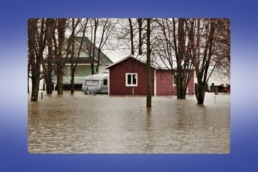What Is Covered Under Flood Insurance?
Floods are the silent home destroyer. The amount of damage they can cause has no limit, and over 15 million US homes are at high risk of flooding.
While there isn’t much you can do to prevent a flood from happening, there is plenty you can do to protect yourself from financial ruin. Don’t wait until the next disaster to start thinking about it. Let’s look at what is and isn’t covered by flood insurance!
What Is Covered Under Flood Insurance?
If you purchase flood insurance for your property, you will have to go over all the details with your insurance provider to know exactly what is covered under your policy. However, there are many items that are most likely to be covered by just about any policy, so let’s talk about the ones you should expect.
If there is something you want to be protected that you don’t see on this list, be sure to schedule a consultation with a flood insurance provider and discuss your concerns so they can find you the right coverage.
Structure Of Home
Floods pose enormous damage to your home itself. This is especially true if, like most houses, it’s made of wood.
If water gets into the walls or floors, it poses serious risks to the actual structure of a house, which could cause the entire house to need replacement. This is the number one reason flood protection is important, as these costs are devastating. Most policies will cover up to $250,000.
Electrical And Plumbing
Water damage is likely to destroy the electric system in your home, so having this covered is essential. Plumbing systems can be totally shifted around, rusted, or broken because of flooding, too.
Foundation
Anything that is stationary and part of your home will be covered, including the foundation. While every foundation is different, most are durable and may not require coverage in the event of a flood.
However, if the flood covers a larger area and harms the soil that your foundation lies in, the foundation could actually sink, shift, or even lift, which is an expensive fix. Even the slightest shift can damage the rest of your home.
Certain Appliances
Any built-in appliances in your home will be covered. This includes your water heater, furnace, central air or vacuum systems, and more. It also includes appliances that aren’t built in but are essential to a home like a refrigerator.
Cleanup Expenses
When disaster strikes, it makes a mess. If you need walls taken down, flooring removed, and appliances thrown out, then you’re going to want flood insurance to cover you! Even for a minor flood, you’ll at least need a dumpster and a cleanup crew. Your flood insurance policy should cover these expenses.
Personal Belongings
Note that your policy may not cover your personal belongings. Some policies will cover your house and certain appliances, but anything else of value may require a separate policy.
In many cases, the flood insurance policy will cover the damages of your home up to $250,000, and a separate policy will be required for most belongings, usually up to $100,000.
Many regular insurance policies will cover your clothes, electronic devices like televisions, furniture, dishwashers, and other belongings. However, if you have to take out a separate policy, having them covered is a great idea to avoid having to buy everything all over again.
What Isn’t Covered
As we said, personal belongings may require a separate policy. However, read the fine print. Leaving valuable items in your basement in a high-risk area may also leave them unprotected from insurance.
Underground levels may only receive limited coverage by your insurance policy, so be sure to go over this with your insurance provider if you plan to keep valuables that are vulnerable to flooding in high-risk areas of your home.
Coverage for your basement may be limited to only your washer and drier, portable air conditioners, and food freezers. If you have an attic or alternative storage space, we recommend you store your other valuables there.
Another valuable item that may be missed by your flood insurance coverage is your car, as it is not part of your home, so be sure to go over your options for that as well.
Certain cabinets, shelves, furniture, and kitchen appliances are unlikely to be covered by your policy. If you open a second policy for personal belongings, be sure to keep a list of what you want protected before signing up, and have a list of questions ready!
Do You Need Flood Insurance?
In all honesty, yes. Nobody is safe from flooding. People think of fires as the biggest threat to your property but floods can easily destroy everything you own. That’s true if you live 50 feet from a lake or at the top of a hill.
If you think you’re at a seriously low risk of flooding, then that’s all the more reason to purchase flood insurance. Lower-risk areas will be less expensive for the purchaser. The cost of floods every year is over $17 billion in the US, and that number is expected to increase by up to 61% over the next 30 years.
Find The Right Policy For You!
Now that you know what flood insurance covers and doesn’t cover, be sure to look around for the coverage that meets your needs. It isn’t just residential insurance either, so check out some benefits of commercial flood insurance for your business, and stay up to date with our latest insurance news!
